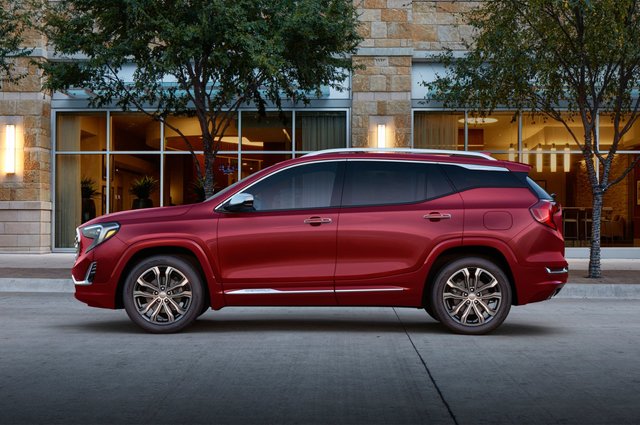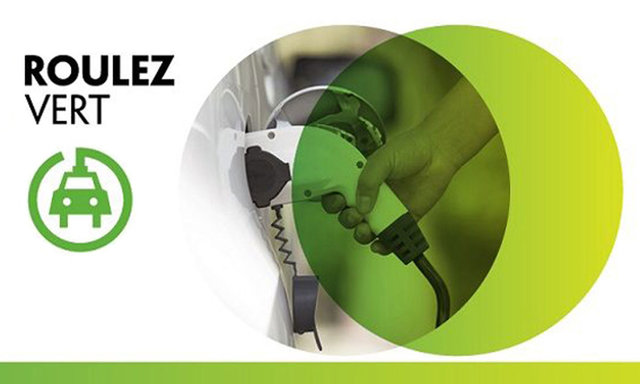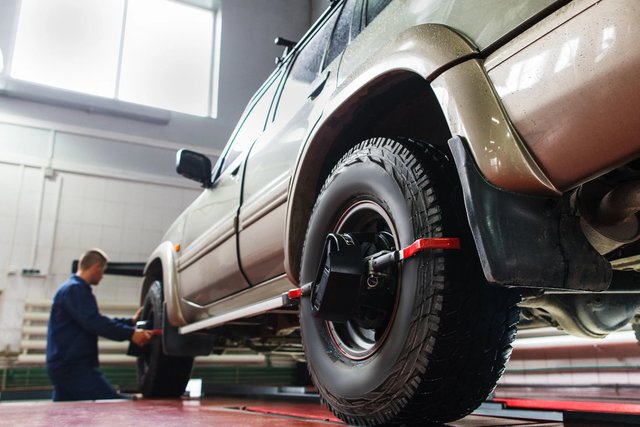Having been introduced in 2009, the outgoing GMC Terrain has grown long in the tooth — few vehicles have a shelf life nearing that today, so the refresh was past due. This time around, it has more substance to its style, it is lighter and stronger, and it has a trio of turbocharged engines to go with the three trim levels — SLE, SLT and the range-topping Denali.
The new platform, which it shares with the Chevrolet Equinox, is 34 per cent stiffer and around 150 kilograms lighter than before. This makes for leaner and keener handling and a better ride. Unlike many in the segment, the Terrain has European-like suspension tuning, which brings the best of both worlds. It is flat through a corner, yet it enjoys a very comfortable highway ride. Throw in a solid steering setup and the optional all-wheel-drive system, and the Terrain drives more like a wagon than it does a typical crossover. On the test route the civility of the platform and suspension came through loud and clear — it is sportier than the Honda CR-V and Toyota RAV4, yet has a much better highway demeanour than the Ford Escape.
The all-wheel-drive system is front-biased and includes two- and four-wheel-drive modes. If fuel economy is important, then the front-drive setting has its place. But it is otherwise best left in four-wheel-drive mode, as the turbocharged engine tends to chirp the tires on dry pavement. Sprinkle a little water, and splitting the power four ways brings much better composition.
The motivation starts with the base 1.5-litre turbocharged four-cylinder engine. It pushes 170 horsepower and 203 pound-feet of torque through a new nine-speed automatic. It slips through the gear without becoming confused, unlike other nine-speed boxes. Next up comes its larger 2.0L turbo-four sibling, bumping output to 252 horsepower and 260 lb.-ft. of torque, and has a beefed-up version of the nine-speed automatic. Most prospective purchasers will be able to live with the smaller engine and the performance/economy balance it brings. The larger unit is going to be the more popular gas engine choice, as it puts some real spring in the response, especially through the all-important mid-range.
The third engine is the intriguing one — a four-cylinder, 1.6L turbodiesel that makes 137 horsepower and 240 lb.-ft. of torque. On the drive route, it more than held its own while returning significantly better fuel mileage than either of the gas engines. It’s a quiet – an inordinate amount of work was done to muffle the usual clatter – plus responsive and rewarding drive.
This means the diesel could end up being the most popular engine choice. Yes, it does have a urea tank to keep topped up, but it is large enough it will only need doing every 10,000 kilometres. And unlike most the top-up point sits right beside the fuel filler. This engine works with a six-speed automatic; GMC says the broad torque plateau means it does not need the additional gears to deliver punchy performance and superior fuel economy. On a blend of country roads and highway it averaged 7.2L/100 kilometres.
One of the key changes to the cabin is the inclusion of gear selector buttons in lieu of a shifter. The buttons pull back to engage the gear — it gives a more tactile feel while doing away with the chance of inadvertently changing gear by brushing the wrong button. Another neat extension is the Low feature – when engaged, it drops the transmission down two gears to introduce engine braking on a long descent. The driver, through two small switches, then has the option of dropping more gears to increase the amount braking or upshifting to reduce it. It works very effectively.
The rest of the cabin is finished with top-notch, soft-touch materials and some real aluminum accents. Taking pride of place is the GMC IntelliLink infotainment system. Depending upon the trim, the seven- or eight-inch touchscreen recognizes cellphone gestures like swipe and pinch. It is one of the better infotainment systems, as it was a quick learn. It also brings a host of connectivity, including a 4G LTE WiFi hotspot used to file this very story!
Move rearward and the back seat has plenty of space for two adults to sit in comfort, 846 litres of cargo space seats up and 1,792 L with them folded down. When down, the floor is almost completely flat — GMC says it slopes up just two degrees. The unspoken plus is the fact the front passenger’s seat also folds flat. This means a 3.7-metre-long item can be loaded inside with the power liftgate closed and carbon monoxide does not find its way into the cabin.
If there is a nit to be picked, it lies in the availability of the safety features that are rapidly becoming standard. Blind spot monitoring and cross-traffic alert are part of the Driver Alert I package on the SLE and SLT. The Denali gets these two as standard, but it requires the addition of the Driver Alert II pack to get forward collision alert with low-speed autonomous braking, lane departure warning with keep assist, and automatic high-beams. Maybe GMC should take a leaf out of Toyota’s book and start making the latter suite of features standard across the board.
The latest Terrain takes some significant steps forward. It has good looks, a superior ride and handling balance, and a very comfortable and well-equipped cabin. The bonus is that delightful turbodiesel engine — not including the closely related Equinox, it’s the only one in the segment right now.
The 2018 GMC Terrain starts at $31,995, including freight, for the SLE front-drive model (a drop of $1,605) and tops out with the full-zoot, all-wheel-drive Denali at $43,495, which is, again, down $3,580 compared to the 2017 model.







